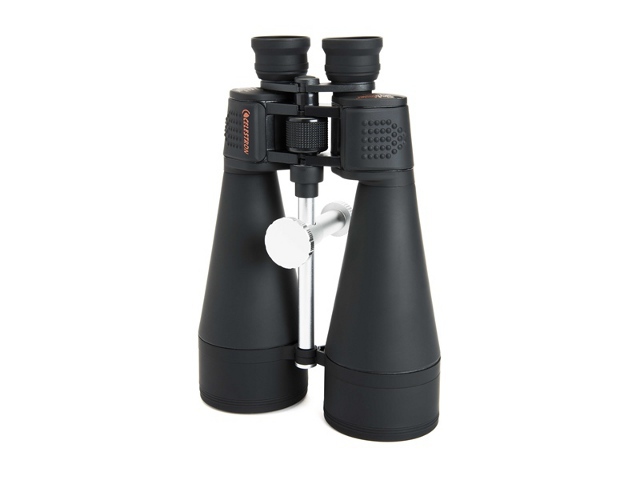Six Top Tips for using Ordinary Binoculars for Stargazing
By Staff Writer 16 March 2016 | Categories: news
Are you keen to learn more about the stars but are not sure if you want to commit to purchasing a telescope just yet? Celestron South Africa provides six tips to stargaze like a pro with only a pair of ordinary binoculars needed.
Tip #1 - Use the binoculars you already have on hand
You know those binoculars that are hiding somewhere in the back of your cupboard? Get them out, dust them off and get ready to use them to view the stars. If you want to know the strength of your binoculars, then turn them over and on the back you’ll see two numbers separated by an ‘x’. The first number will tell you the magnification. For instance, a ‘7’ reveals seven times the information that the naked eye can see. The second number is the aperture, or the diameter of the large front lenses, measured in mm.
Celestron recommends a pair of 7x50, 8x50 or 10x50 as the best for someone starting out in using binoculars to study the night sky.
Tip #2 - Choose a safe place and take a friend
Your own backyard can be a great place to start stargazing. If you live in a city, you might have to contend with light pollution that you won’t be obscured by in the country, but you should still be able to have a wonderful experience.
Wherever you choose to observe the stars from, make sure that it is safe to be there at night and tell someone where you are going. You will find it is more fun to observe the night sky with a friend, and much safer too.
Tip #3 - Use a red light
It takes your eyes about 20 minutes to adjust to the darkness by dilating your pupil and filling up with a light-sensitive protein called Rhodopsin (visual purple). Even a few seconds of white light, like that in a typical torch, can set this process back, meaning that it’ll take another 20-30 minutes for your eyes to readjust to the dark.
If you own a headlamp it might already have a red light feature you can use. Alternatively, take your torch and put red cellophane over the lens to make the light red, to use while you head to your safe place to view the stars. This red light will help your eyes adjust more quickly to the night sky.
Tip #4 - Get yourself a good sky map and learn how to use it
A sky map is simply a map of the night sky that shows the location of stars, constellations, planets and other celestial bodies. You can use it to help you find these objects in the sky and to identify unfamiliar objects. A good sky map will show you the entire sky as it can be seen at once.
You can download one for free at skymaps.com by clicking here. This version even includes a list of celestial objects that are visible with binoculars. Just make sure to select the correct area as they offer monthly sky maps for the Southern, Equatorial and Northern skies. If you prefer a digital version, there are a number of sky maps you can download for your mobile device. Here’s a list of some of the best Android apps.
Tip #5 - Start by viewing the moon
Ever wondered what early astronomers like Galileo were able to see with their telescopes? Well, grab your binoculars and find the Moon and you will have a good idea of the detail basic telescopes gave.
If you want to see all the features on the Moon, the best time to observe it is at twilight when there is less glare, so the craters, bumps and mountains will be more visible. This article by Sky and Telescope will show you how to use a Moon map and identify some of the Moon’s biggest and most obvious features.
Tip #6 - Attend public stargazing events in your area
Contact your local astronomy club or the nearest planetarium to find out about Astronomy events being held in your area. By attending these events you will learn more about the night time skies, have a chance to try out various telescopes before purchasing, and have the opportunity to meet people who love the sky and are willing to share their knowledge and observing skills.
If you live in the Western Cape, consider attending one or more of the Stargazing events organised by the Orion Observasie Groep.
Source: Celeston Telescopes South Africa www.facebook.com/CelestronTelescopesSA
Most Read Articles

Have Your Say
What new tech or developments are you most anticipating this year?



